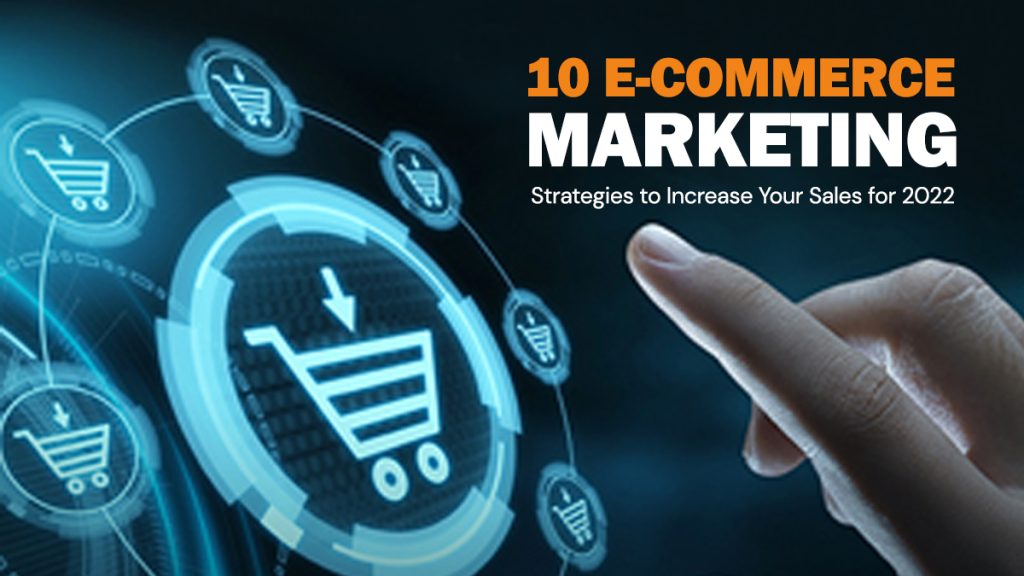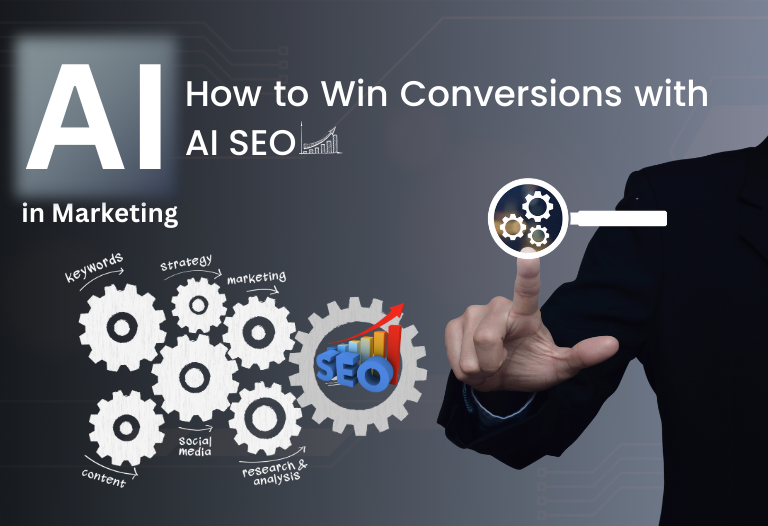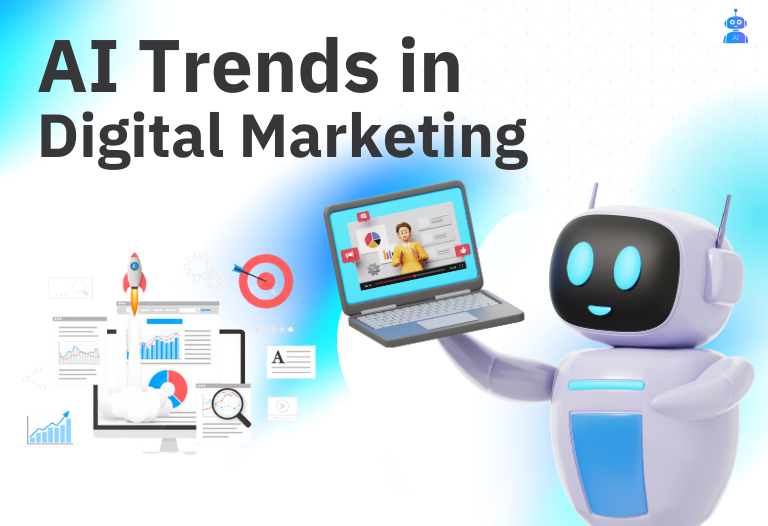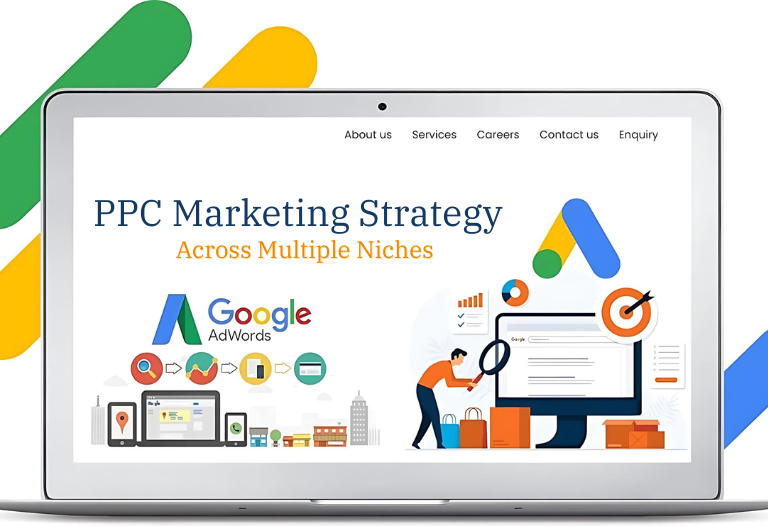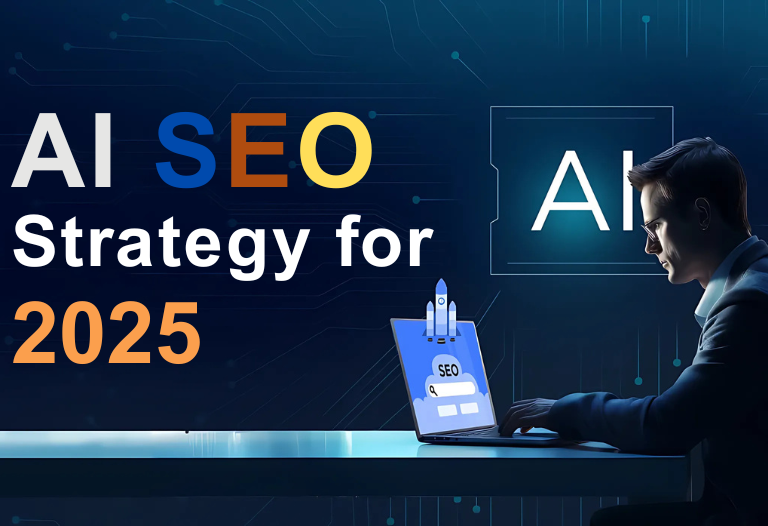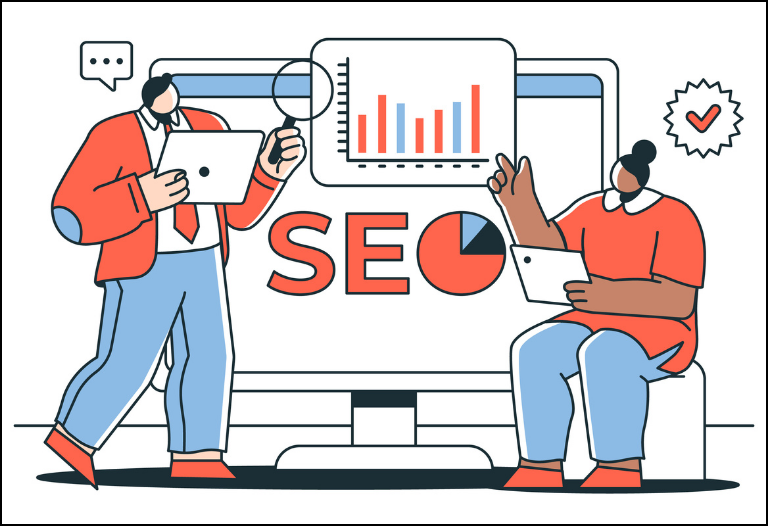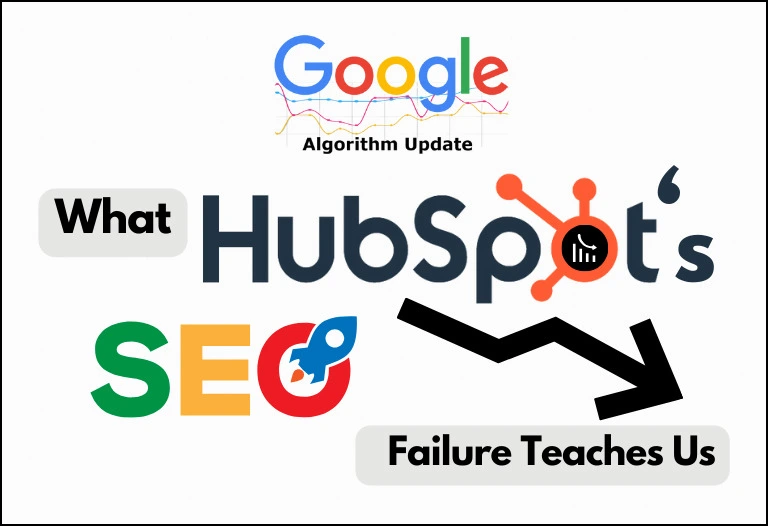
Going for an E-commerce App Development app without breaking the bank is crucial in today’s digital world. This guide provides you with practical approaches for making your eCommerce app affordable. Some topics include planning basic phases, developmental approach selection fundamentals, and cost reduction strategies.
As a newcomer to the market or an experienced businessman, there are multiple useful tips and recommendations for every business interested in operating an efficient and cost-effective eCommerce app. Learn how to get big value even with a small budget when designing your app.
Understanding E-commerce App development
An eCommerce app is an application that helps business people sell their products online and launch their services. These applications offer a window through which the clients can shop for products, order, and keep track of their accounts using their smartphones.
Importance of Having an E-Commerce App Development for Businesses

E Commerce apps are essential for businesses these days. It helps reach a wider audience because most customers today would rather buy products online using their phones.
An app brings customer utility by enhancing their shopping and loyalty so that they can shop conveniently.
For business people, it means increased chances of selling their products, improved customer relations, and a leading marketplace.
Common Challenges and Costs Associated with E-Commerce App Development
Getting into eCommerce app development also has its own concerns and issues. Another challenge is to achieve good usability; in other words, create an interface that is fun and easy to explore.
Another aspect is security since the application stores users’ data and performs transactions. Other challenges are in integrating all the available payment gateways and handling a large pool of products.
In terms of costs, it is worth knowing that the costs of developing an eCommerce app can vary greatly. These factors include the features, the design, and whether you have your own team of developers or you got the work done by some other company.
Other costs are maintenance, amendments, and advertisement costs to bring the app to the target audience.
Planning your E-Commerce App Development
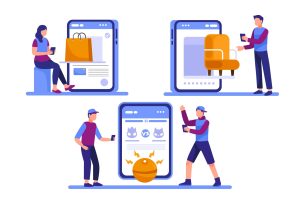
Defining Your App’s Purpose and Goals
Market research is crucial. Study the strategy of your rivals and analyze the current trends in the world of eCommerce. This research will enable you to know the areas that are effective and those that are ineffective in the context of your application’s features and interface design.
Conducting Market Research
Market research is crucial. Evaluate your competition and consider what is happening in the eCommerce business currently. With the help of this research, you will be able to determine the best strategy based on the features and appearance of your app.
Identifying the Target Audience and Their Needs
Understand your clients or users, as it is critical for the success of an eCommerce application. Who are your target consumers? Describe their convenience store shopping behavior; what do they prefer, and what do they not prefer? Know your audience to suit their needs and expectations better when they use the application.
Creating a Detailed Project Plan and Budget
Last of all to prepare draw up a comprehensive project plan with a budget. Explain each stage of designing and e-commerce app development, starting with idea formation and ending with testing.
It is also important to make some predictions about the costs related to each of the phases: development, marketing, and maintenance. Clear planning and costing will be useful in defining the main ways and means of organizing the job and controlling costs.
Implementing these steps will assist you in creating a concrete foundation for your eCommerce mobile application to achieve your business objectives and meet the customer’s needs.
Choosing the right E-Commerce App Development approach
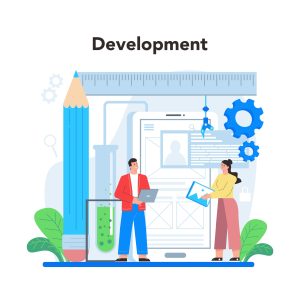
When going for e-commerce app development, you have two main options: two which include custom development and template-based development. Each approach has its advantages and disadvantages:
- Custom Development: Custom development refers to developing a new app from the ground up. This is the most efficient method of developing a one-of-a-kind app that closely relates to the business and its operations.
- Complete customization: You can design every feature and functionality according to your requirements.
- Scalability: The decision to extend the program’s capabilities is easier and more efficient when the business expands.
- Unique user experience: A custom app can provide you with enhanced usability that differentiates you from your rivals and business partners.
However, it is expensive because it is done for a particular client and consumes a lot of time. This process takes more time for the development team, consumes more time and money, and can benefit startups or businesses with small development budgets.
Template-Based Development
Templates development involves creating an application based on templates or themes that are available from the developers. This one is more affordable and efficient. The main benefits include:
- Cost-effective: It’s significantly cheaper than custom development.
- Quick to launch: Templates allow for a faster development process, helping you get your app to market quickly.
- Simplicity: Templates are user-friendly and often come with built-in features.
The major disadvantage of template-based apps is that they are less adaptable and may not incorporate all the necessary features your business requires.
There is little freedom in customization, which decreases competitiveness and unique selling proposition.
How to Choose the Right Approach
Consider your budget, time lines, and organizational requirements. Regarding the advantages, if you have a small amount of money to invest and want to start quickly, then templates are suitable for you.
As for the more unusual and promising solution, go for custom development. Consult with your personal strategic and financial goals before implementing this feature in your e-commerce app development.
Selecting the right technology stack
Choosing the technology stack for an eCommerce app does not leave room for compromise when designing the app. A technology stack is a concept that defines a series of languages, frameworks, and tools needed to develop an application.
So, let’s explore some of the technology stacks for e-commerce applications that are most popular, their costs, and how one can aspire to choose the most cost-effective options.
Overview of Popular Technology Stacks for eCommerce Apps
MEAN Stack (MongoDB, Express.js, Angular, Node.js):
- Popular for its flexibility and scalability
- Ideal for single-page applications LAMP Stack (Linux, Apache, MySQL, PHP)
- Reliable and widely used
- Great for traditional web applications MERN Stack (MongoDB, Express.js, React, Node.js)
- Similar to MEAN but uses React for the front end
- Preferred for dynamic user interfaces Shopify or WooCommerce
- Ready-made solutions
- Excellent for small to medium-sized businesses
Cost Implications of Different Technologies
- MEAN and MERN Stacks: Generally lower upfront costs but require skilled developers. Suitable for scalable and robust applications.
- LAMP Stack: Cost-effective and has a large community for support. Best for simple to moderately complex apps.
- Shopify/WooCommerce: Monthly subscription fees but save on development time and costs. Great for quick launches.
Tips for Selecting a Cost-Effective Technology Stack
- Understand Your Requirements: Clearly define what your app needs to do. Simple apps may not need a complex stack.
- Consider Developer Availability: Choose a stack that your team is familiar with, or that has readily available developers.
- Evaluate Long-Term Costs: Look beyond initial development costs. Consider maintenance, scalability, and future updates.
- Use Open-Source Solutions: They can significantly reduce costs while providing flexibility.
That is why choosing the right technology stack is crucial – to have a suitable and cost-effective E-Commerce app.
Design and User Experience (UX)
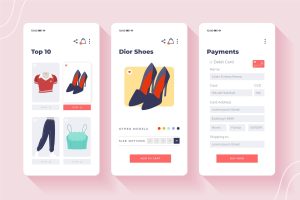
Importance of a User-Friendly Design
Ease of Organization is very important when it comes to e-commerce applications. It checks that users can comfortably move about in your application, locate products, and even purchase them without confusion.
A good design meets user satisfaction, encourages them to stay on your site longer, and makes more sales.
In other words, if users find your app easy to use, you will definitely find them coming back for more and even referring other people to the application.
Cost-Effective Design Strategies
Designing a great place that does not cost a fortune is possible. First, the goal is to strive for usability. Simplicity in the layout, structures, and designs is not only economical but also preferable to users.
Do not introduce complex elements and focus on the aspect that can be most helpful to your users. This will save time and amount of money required for the development and also give a better user experience.
Using Design Templates and UI Kits
One of the best ways to save on design costs is by using design templates and UI kits. These pre-made designs are often customizable and can give your app a professional look without the high price tag. Many platforms offer free or affordable templates and UI kits that you can use as a foundation, allowing you to create a polished design quickly and easily.
Conducting Usability Testing on a Budget
Usability might be a vital part of creating an application that will conform to the expectations of the users. You do not require a big budget for this kind of advertising. A good place to begin is to test with friends, family, or other close acquaintances. Collect some of their opinions and concerns and change for the better.
As with other factors, there are cheap online tools that you can use to implement usability tests effectively. They will help you avoid increasing the application’s cost beyond practical applicability while still delivering a positive user experience.
Finding affordable development resources
Hiring Freelance Developers vs. Development Agencies
When it comes to eCommerce app development, there are two primary options: finding independent app developers or turning to a development company. Freelance developers are more affordable and more accommodating in their prices as compared to small firms. This makes them good for people with small budgets.
Development agencies on the other hand, offer a team of experts who are capable of handling bigger projects with extensive features. They are normally expensive but they provide more services and backing.
Platforms for Finding Affordable Developers
First of all, numerous sites can help you look for cheap developers. Different freelance marketplaces are Upwork, freelancers, Fiverr, and many others. Therefore, one is in good standing to look for individuals, read ratings, and even search for prices on these platforms.
Individuals can go to post their projects, and other developers can take a seat and place their bids. This can assist you in slicing the finest deal ideal for your budget and necessities.
Tips for Vetting and Selecting Cost-Effective Developers
To ensure you get the best value for your money, follow these tips when vetting and selecting developers:
- Check Reviews and Ratings: Look at feedback from previous clients to measure the developer’s reliability and quality of work.
- Review Portfolios: Examine their past projects to see if their style and expertise match your requirements.
- Conduct Interviews: Have a conversation to assess their communication skills and understanding of your project.
- Start with a Small Project: Test their skills and work ethic with a small task before committing to a larger project.
- Set Clear Expectations: Ensure both parties agree on the scope, timeline, and payment terms to avoid misunderstandings later.
So, by choosing suitable development resources, you can create the best eCommerce app at reasonable costs.
Utilizing Pre Built Solutions and Tools
Integrating pre-built solutions and tools for your eCommerce app development is quite beneficial and cost-effective. These solutions are gaining popularity due to numerous benefits, making it easy for developers to adopt them for cost-effective development.
Advantages of Using Pre-Built Solutions
Pre-built solutions are inexpensive since they eliminate the time and resources that would have gone into development. Instead of having to start from the ground up, it is easier to utilize existing platforms and tools for other applications that already exist. This approach also assists you in the elimination of prevailing problems and bugs to enable a more effective development process.
Overview of Pre-Built E-Commerce Platforms
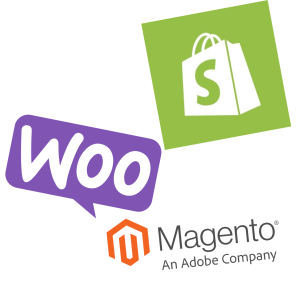
Several popular pre-built e-commerce platforms can help you get started quickly and efficiently:
- Shopify: Known for its user-friendly interface, Shopify allows you to form an online store without any coding knowledge. It offers various themes and apps to customize your store.
- WooCommerce: This platform is a WordPress plugin that turns your WordPress site into a strong e-commerce store. WooCommerce is highly customizable and supports many plugins and extensions.
- Magento: Magento is a product for big e-commerce resources focused on versatility and additional options. The solution is particularly suitable for organizations that require a flexible and scalable platform.
Integrating Third-Party Tools and Plugins
In order to cut development costs, it is also advantageous to implement some third-party tools and plugins. Mobile app add-ons are prebuilt tools that are beneficial to integrate into your app to provide additional features without starting over from scratch.
For instance, there are plugins for payment gateway integration, shipping vendors, and marketing & promotional tools. By leveraging these pre-built solutions, you can focus on growing your business while keeping development costs low.
Minimizing maintenance and updating costs
The main thing about building an eCommerce app is that you maintain its functionality without spending a lot of money. Here are some easy ways to minimize maintenance and update costs:
Building a Scalable and Maintainable App
First, it is necessary to review the necessary features and create an application with further scalable potential. They should use clean and simple code while making it easily modifiable. Having well-structured code is also beneficial when it comes to addressing bugs and building new functionalities.
Implementing Automated Testing and Continuous Integration
Automated testing facilitates the identification of bugs, which is more efficient than using manual testing to check for bugs. COCI is an automated system where Continuous Integration (CI), such as Jenkins or GitHub Action, begins a test on your code every time you make modifications. This helps ensure your app stays up and, if it does, minimizes the downtime that could prove expensive.
Choosing Reliable Hosting and Cloud Services
Invest in dependable hosting and cloud services. Providers like AWS, Google Cloud, and Azure offer scalable solutions that grow with your app. Reliable hosting ensures your app runs smoothly, avoiding expensive outages. Plus, cloud services often include built-in security features, reducing the need for extra maintenance.
Planning for Regular Updates and Maintenance
Ensure you incorporate reliable hosting and cloud solutions. AWS, Google Cloud, or Azure use solutions that are easily expandable to match the growth of the app. It prevents expensive hosting failures, which can be vital for the steady functioning of applications.
Furthermore, multiple cloud services function within a pre-designed security plan that minimizes the need for additional work.
Therefore, it is better to prioritize scalability, automated testing, reliable hosting, and frequent updates to maintain the performance of an eCommerce app without draining a lot of money into maintenance and updates
Marketing and launching apps
Starting up an app can, at times, be fun and, on the other hand, thrilling. Hence, when targeting the market, avoid expensive advertising techniques and adopt cost-effective methods.
Cost-Effective Marketing Strategies
- Social Media: Some of the places where one can reach their target customer include Facebook, Twitter, and Instagram. Make engaging posts and share updates about your app. Incorporate the use of hashtags to improve discoverability and inspire users to share the content.
- Content Marketing: Create website content regarding the methods in which your app will be useful and valuable to its users. Post these content on your website and your social media accounts. This helps build interest and improves your search engine ranking.
- Influencer Partnerships: Work with influencers who have followers in a similar niche to your target market. They can review your app and talk about their experience, which will bring credibility and more views.
Preparing for a Successful App Launch
- Create Buzz: Arise interest in your app before launch through your social media pages and the website. Use teaser videos and come-with-countdowns in order to create anticipation.
- App Store Optimization (ASO): Increase your title, description, and keywords in app stores. Capture attractive screenshots that depict your app and record nice videos of the app in action.
- Beta Testing: This means that a few users should get to test your app before they officially release it to the public. This makes it easier to spot any problems and get first feedbacks.
Gathering User Feedback and Making Improvements
- Encourage Reviews: Ask users to leave reviews and ratings in the app store. This provides valuable feedback and improves your app’s visibility.
- Monitor Feedback: Pay attention to user comments and suggestions. Use this feedback to make necessary improvements and updates.
- Regular Updates: Renew your app normally and effectively by upgrading it and applying user feedback. This shows that you regard your users highly and that you maintain the mission of delivering the highest quality services.
By following these steps, you will be able to market and introduce your app and collect feedback even after the release.
Measuring Success and ROI
Monitor the potential of your app by analyzing the features that can help in building its success in the long run. Here are key metrics to focus on:
Key Metrics to Track for E-commerce Apps
- Conversion Rate: Measures how many visitors complete a purchase.
- Customer Acquisition Cost (CAC): The price of acquiring a new customer.
- Customer Lifetime Value (CLV): The total income a customer generates over their lifetime.
- Retention Rate: The percentage of consumers who return to make additional purchases.
- Average Order Value (AOV): The average amount spent per order.
Tools for Monitoring App Performance and User Engagement
- Google Analytics: Tracks user behavior and conversions.
- Mixpanel: Analyzes user interactions and engagement.
- Firebase: Monitors app performance and crash reports.
- Hotjar: Provides heatmaps and user session recordings.
Analyzing ROI and Adjusting Strategies
- Calculate ROI: Deduct the total costs from the revenue generated and divide by the total costs.
- Adjust Strategies: Use data insights to tweak marketing campaigns, improve user experience, and optimize pricing strategies.
- Regular Reviews: Continually monitor and analyze the metrics to ensure your app remains successful and profitable.
By focusing on these key areas, you can effectively measure the success of your e-commerce app and maximize your return on investment.
Conclusion
A successful eCommerce app development that consumers will embrace must get ready with an optimum price plan. If you know your objectives, how to develop an app, and what features are crucial, it is possible to create a successful app without spending much.
Make sure to use open-source tools where possible, and always consider going for MVP and using cloud services where you can save money. The final touches involve testing and quality assurance of the application, which is key for the next step, marketing, and app release to the right target consumers.
You must make sure you are current on trends in the industry to see how your app compares. Using the above tips, you will be in a perfect position to develop a good eCommerce app that will meet your business requirements.




 July 3, 2024
July 3, 2024

